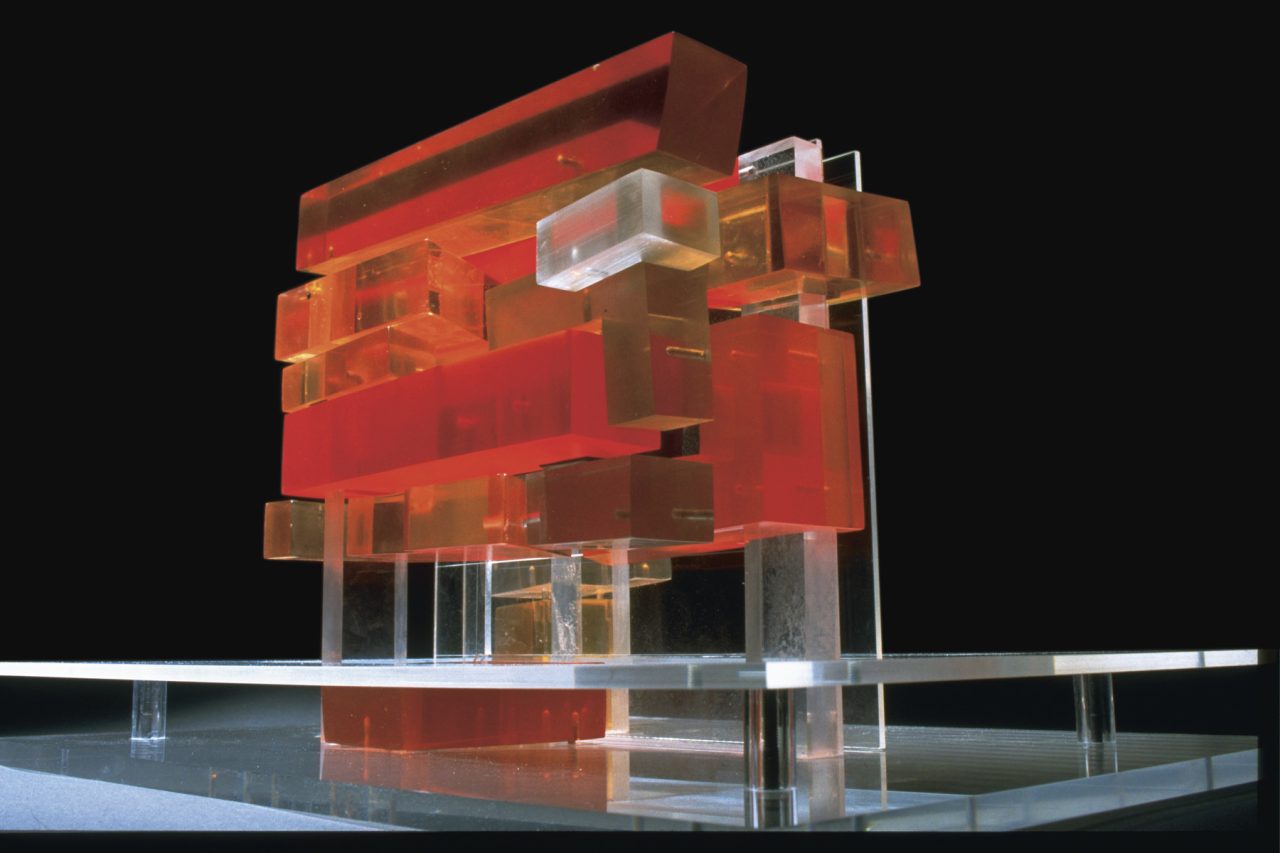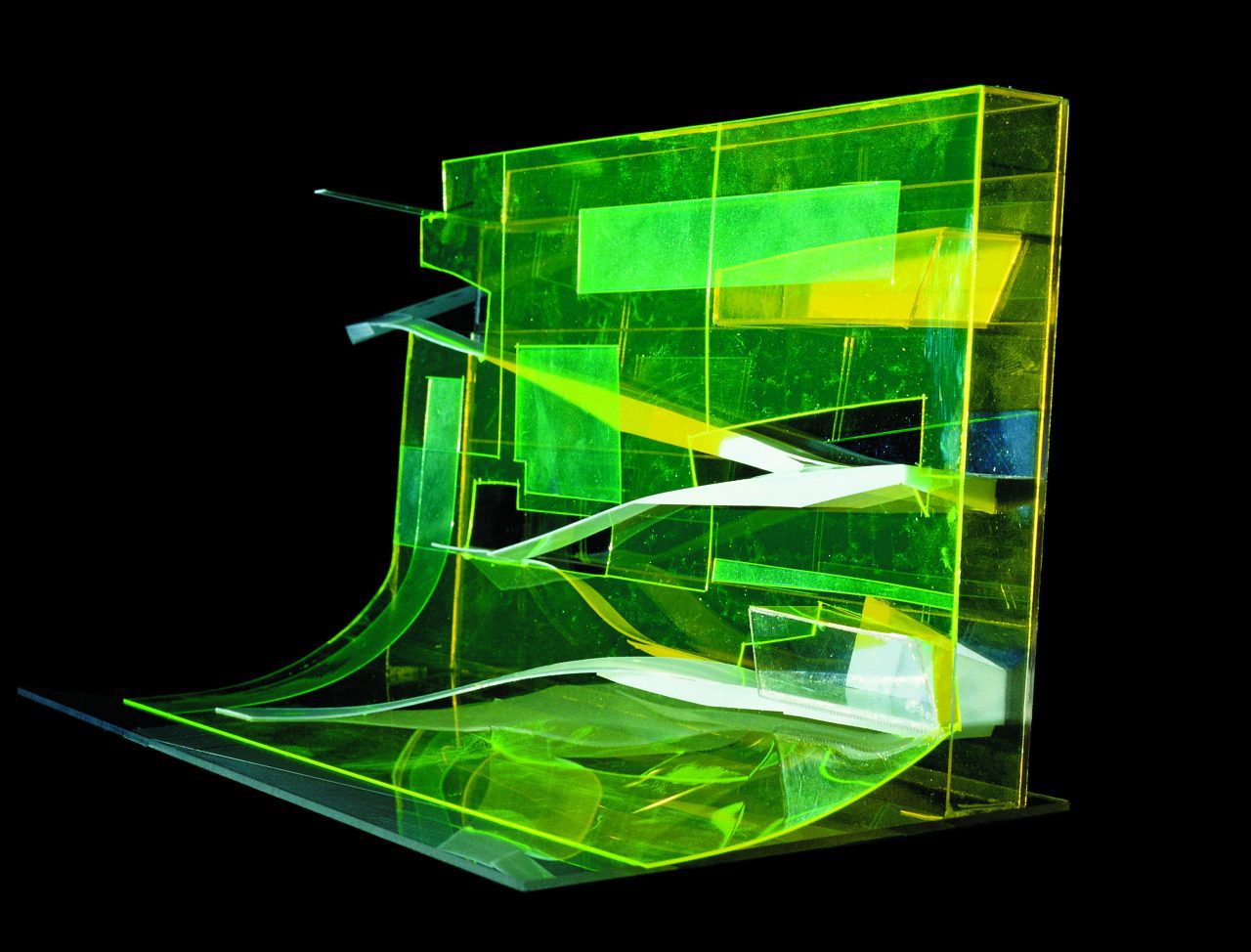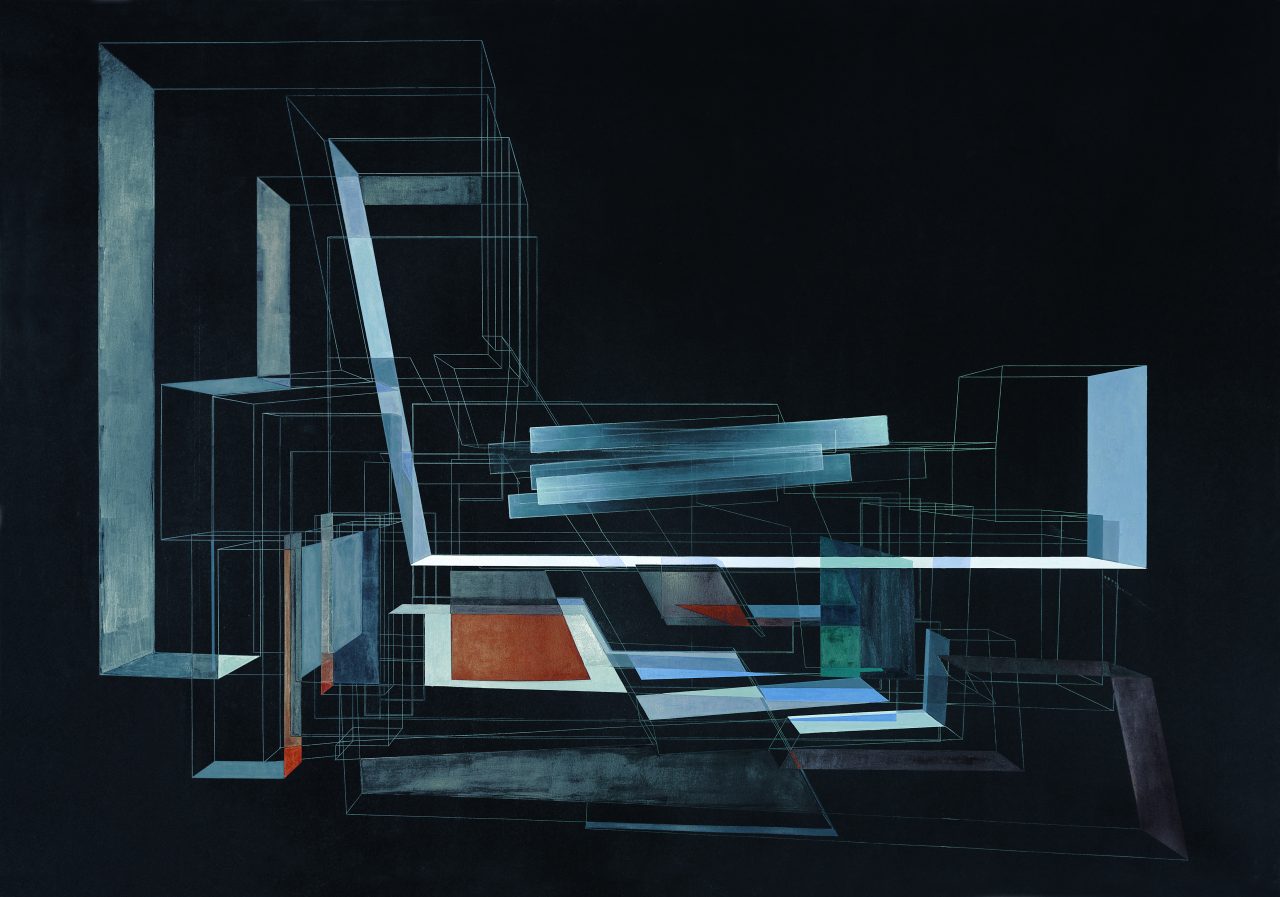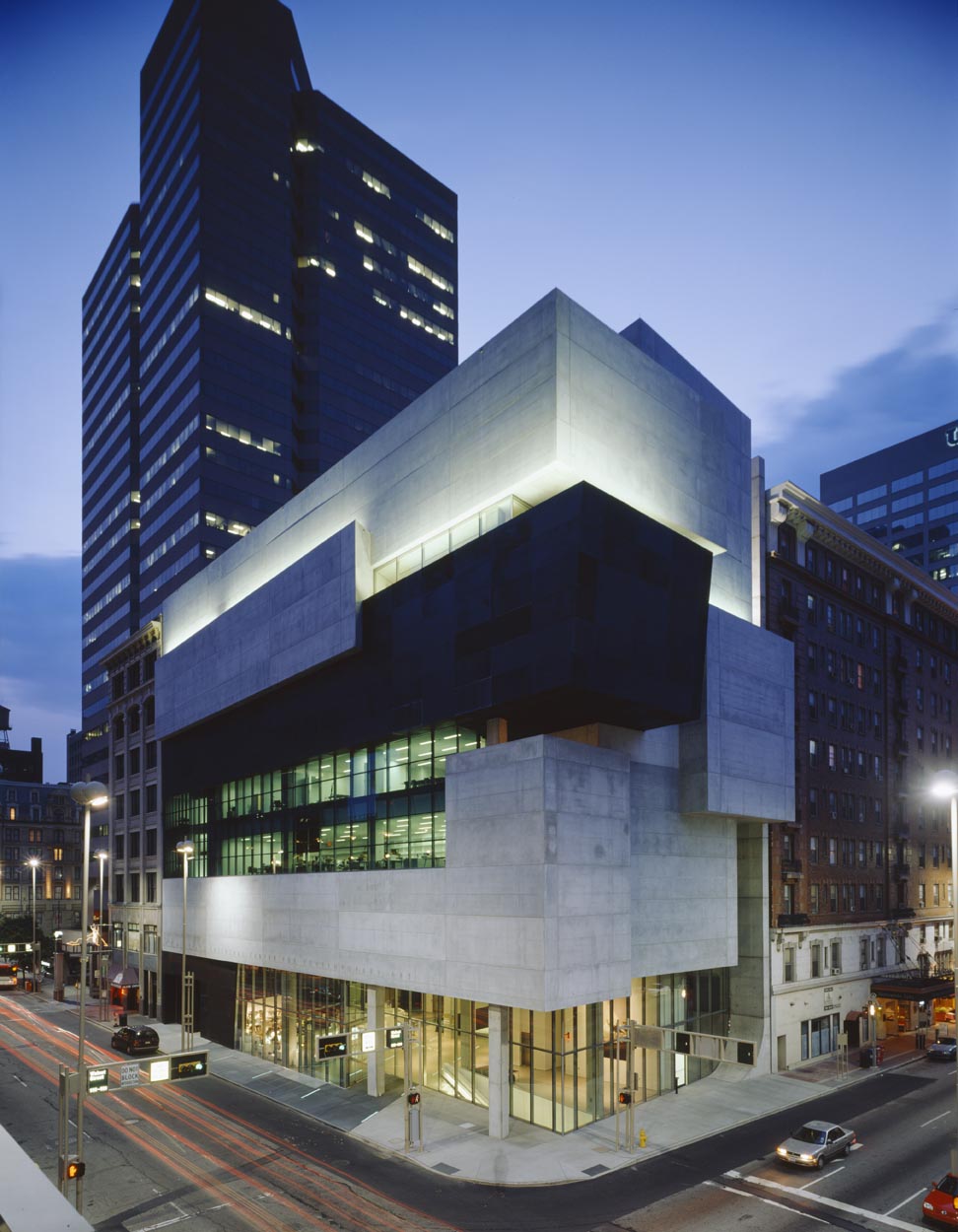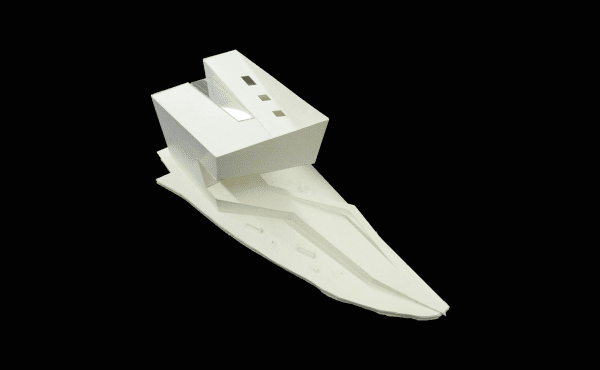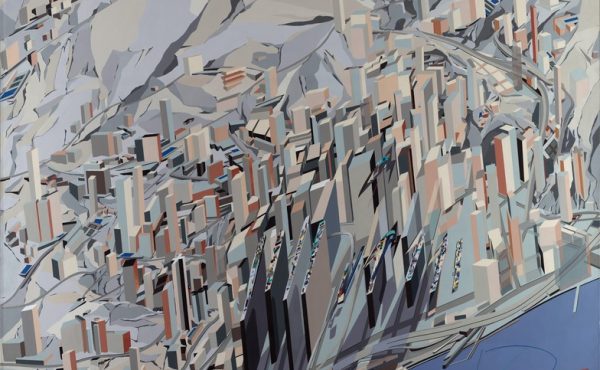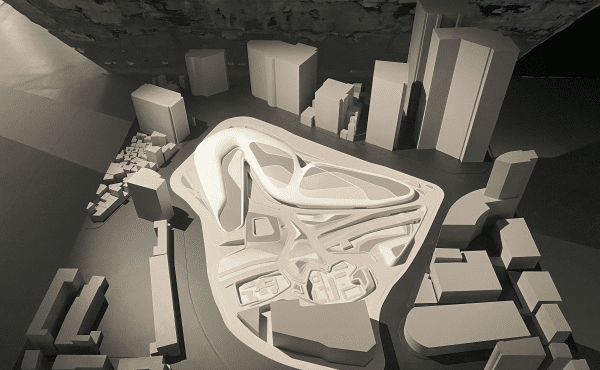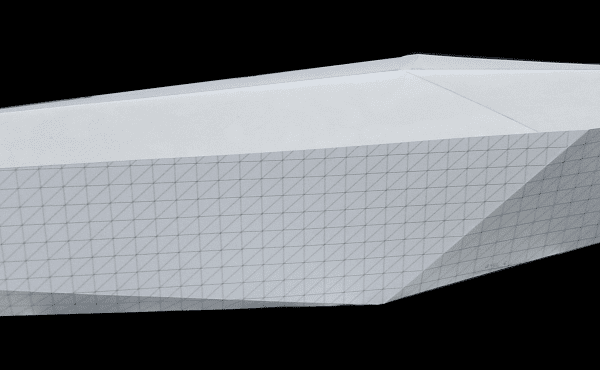Jelly Bean Volumetric Study (2001) is a presentation model for the Lois & Richard Rosenthal Center for Contemporary Art (1997-2003) in Cincinnati, USA, the first American museum by a woman architect and Zaha Hadid’s first built project in the USA. It explores the unique configuration of the interior exhibition spaces on the upper levels of the art gallery, which Hadid referred to as a ‘jigsaw puzzle’.
Comprising sculptural resin blocks that were eventually rendered in concrete, the model’s design harks back to Hadid’s interest in the Russian avant-garde and museum design from her student years, in projects such as Malevich’s Tektonik (1976-1977) and Museum of the Nineteenth Century (1977-1978). The building design also develops upon her earlier idea of a horizontal skyscraper and inventiveness when faced with a small plot, intervening in the congested high-rise urban grid.
Situated on the corner of a downtown city block, the external façade of the ‘jigsaw puzzle’ gives the effect of a floating geometric relief. This creates a formal tension with what Hadid conceptualised as the ‘urban carpet’ of the building, a ramp that extends from the street outside into the central lobby, which allows for the free flow of visitors up to the angular galleries.
